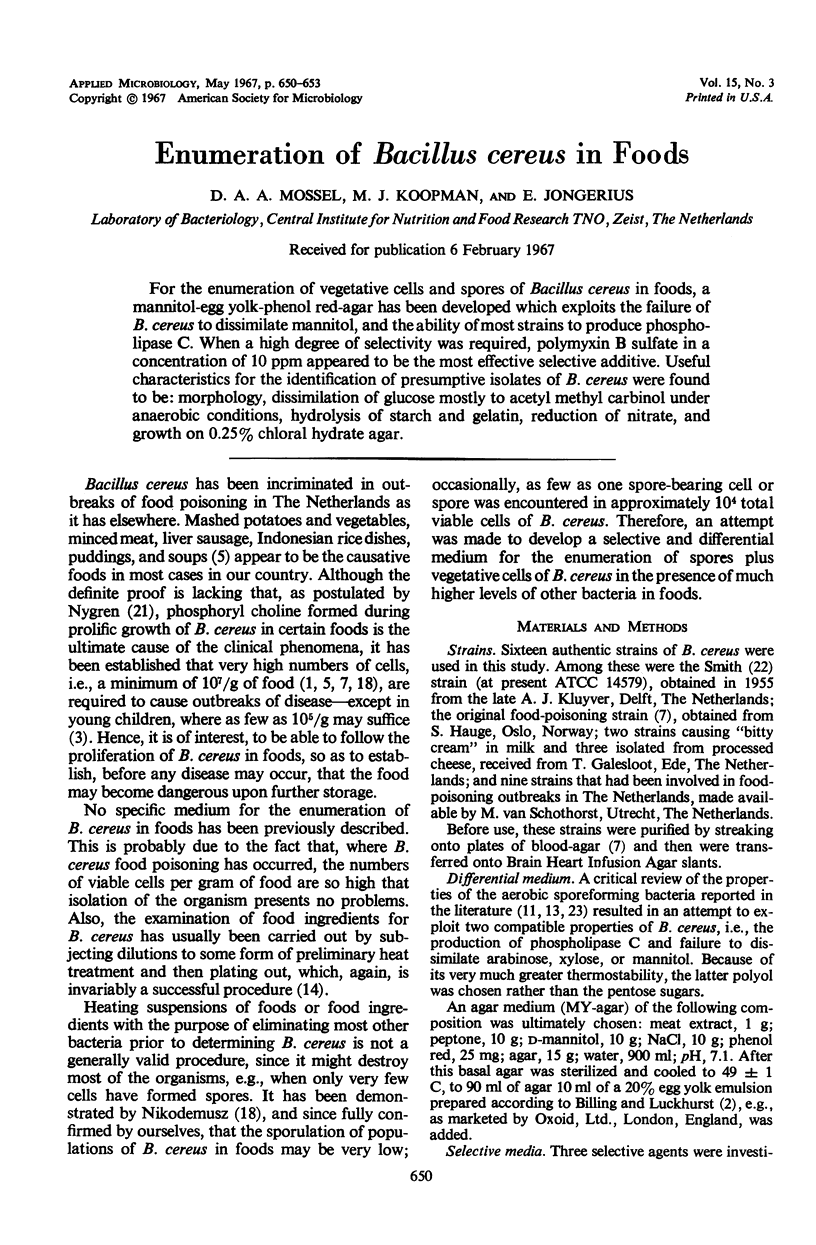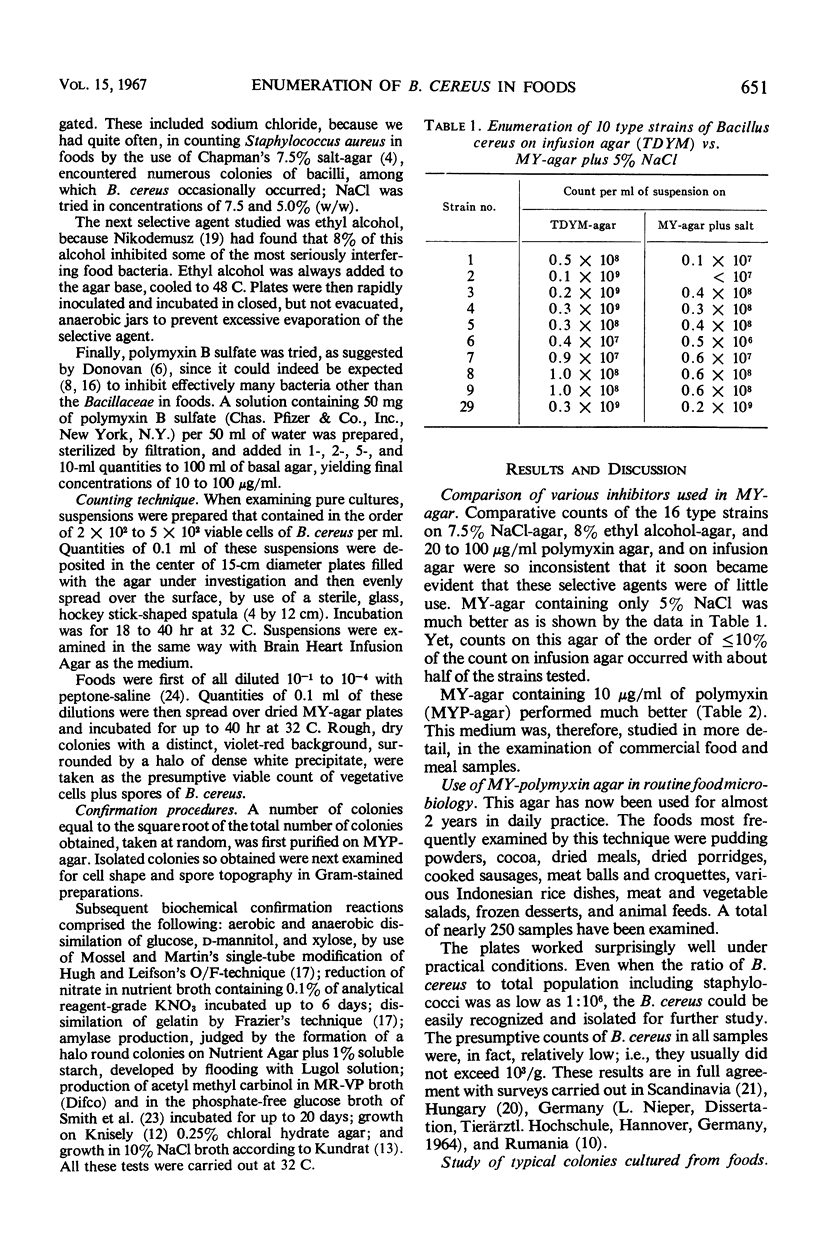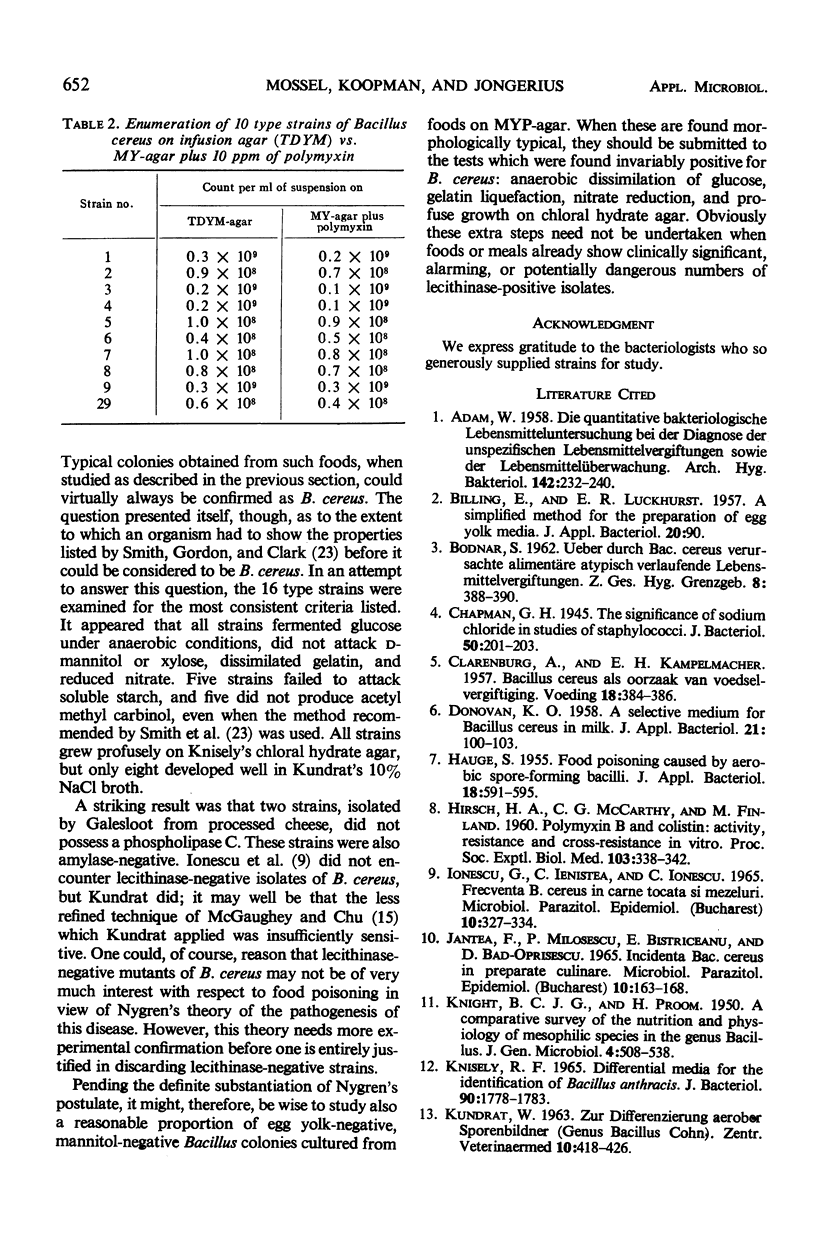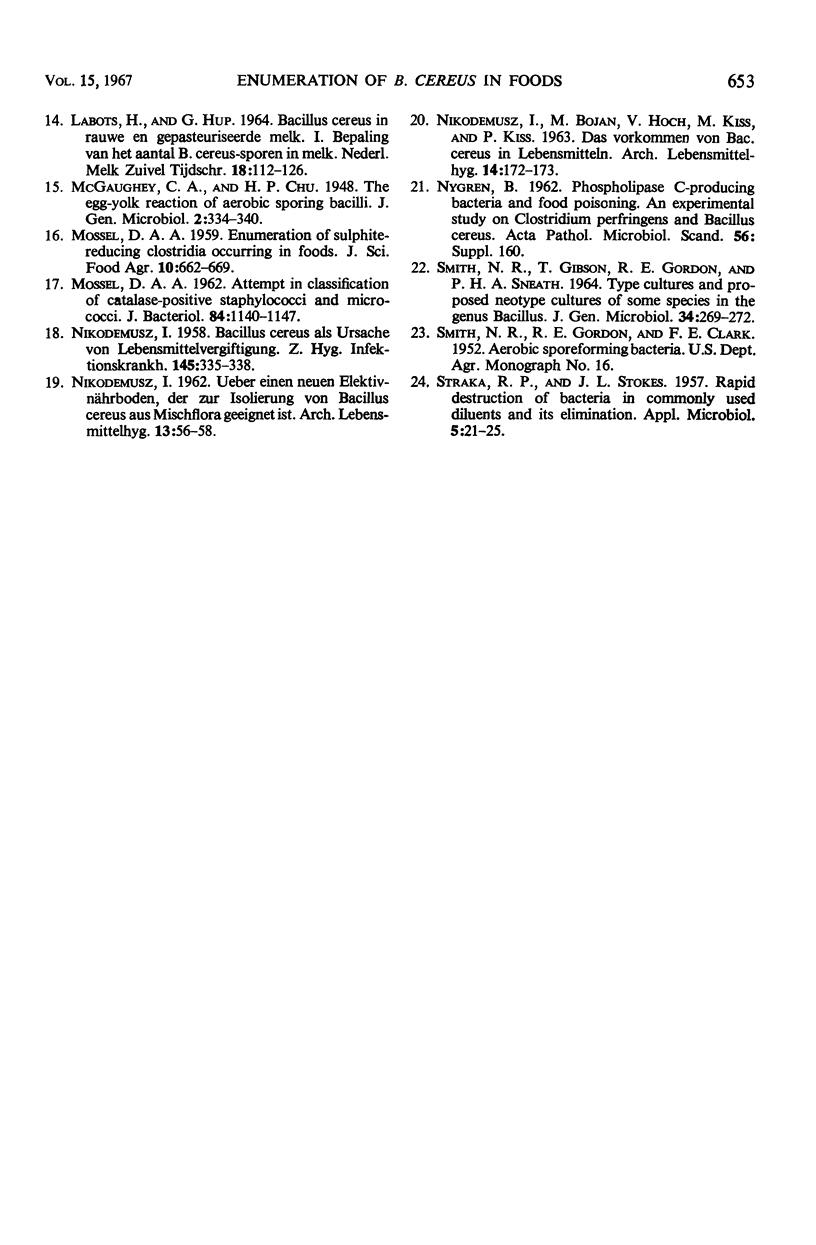Abstract
For the enumeration of vegetative cells and spores of Bacillus cereus in foods, a mannitol-egg yolk-phenol red-agar has been developed which exploits the failure of B. cereus to dissimilate mannitol, and the ability of most strains to produce phospholipase C. When a high degree of selectivity was required, polymyxin B sulfate in a concentration of 10 ppm appeared to be the most effective selective additive. Useful characteristics for the identification of presumptive isolates of B. cereus were found to be: morphology, dissimilation of glucose mostly to acetyl methyl carbinol under anaerobic conditions, hydrolysis of starch and gelatin, reduction of nitrate, and growth on 0.25% chloral hydrate agar.
Full text
PDF



Selected References
These references are in PubMed. This may not be the complete list of references from this article.
- ADAM W. Die quantitative bakteriologische Lebensmitteluntersuchung bei der Diagnose der unspezifischen Lebensmittelvergiftungen sowie der Lebensmittelüberwachung. Arch Hyg Bakteriol. 1958;142(3):232–240. [PubMed] [Google Scholar]
- Chapman G. H. The Significance of Sodium Chloride in Studies of Staphylococci. J Bacteriol. 1945 Aug;50(2):201–203. [PMC free article] [PubMed] [Google Scholar]
- HIRSCH H. A., McCARTHY C. G., FINLAND M. Polymyxin B and colistin: activity, resistance and crossresistance in vitro. Proc Soc Exp Biol Med. 1960 Feb;103:338–342. doi: 10.3181/00379727-103-25511. [DOI] [PubMed] [Google Scholar]
- Ionescu G., Ieniştea C., Ionescu C. Frecvenţa B. cereus în carne tocată şi mezeluri. Microbiol Parazitol Epidemiol (Bucur) 1965 Jul-Aug;10(4):327–334. [PubMed] [Google Scholar]
- JANTEA F., MILOSESCU P., BISTRICEANU E., BAD-OPRISESCU D. INCIDEN TA B. CEREUS IN PREPARATE CULINARE. Microbiol Parazitol Epidemiol (Bucur) 1965 Mar-Apr;10:163–168. [PubMed] [Google Scholar]
- KNIGHT B. C. J. G., PROOM H. A comparative survey of the nutrition and physiology of mesophilic species in the genus Bacillus. J Gen Microbiol. 1950 Sep;4(3):508–538. doi: 10.1099/00221287-4-3-508. [DOI] [PubMed] [Google Scholar]
- Knisely R. F. Differential media for the identification of Bacillus anthracis. J Bacteriol. 1965 Dec;90(6):1778–1783. doi: 10.1128/jb.90.6.1778-1783.1965. [DOI] [PMC free article] [PubMed] [Google Scholar]
- MOSSEL D. A. Attempt in classification of catalase-positive staphylococci and micrococci. J Bacteriol. 1962 Dec;84:1140–1147. doi: 10.1128/jb.84.6.1140-1147.1962. [DOI] [PMC free article] [PubMed] [Google Scholar]
- NIKODEMUSZ I. Bacillus cereus als Ursache von Lebensmittelvergiftungen. Z Hyg Infektionskr. 1958;145(4):335–338. [PubMed] [Google Scholar]
- SMITH N. R., GIBSON T., GORDON R. E., SNEATH P. H. TYPE CULTURES AND PROPOSED NEOTYPE CULTURES OF SOME SPECIES IN THE GENUS BACILLUS. J Gen Microbiol. 1964 Feb;34:269–272. doi: 10.1099/00221287-34-2-269. [DOI] [PubMed] [Google Scholar]
- STRAKA R. P., STOKES J. L. Rapid destruction of bacteria in commonly used diluents and its elimination. Appl Microbiol. 1957 Jan;5(1):21–25. doi: 10.1128/am.5.1.21-25.1957. [DOI] [PMC free article] [PubMed] [Google Scholar]


